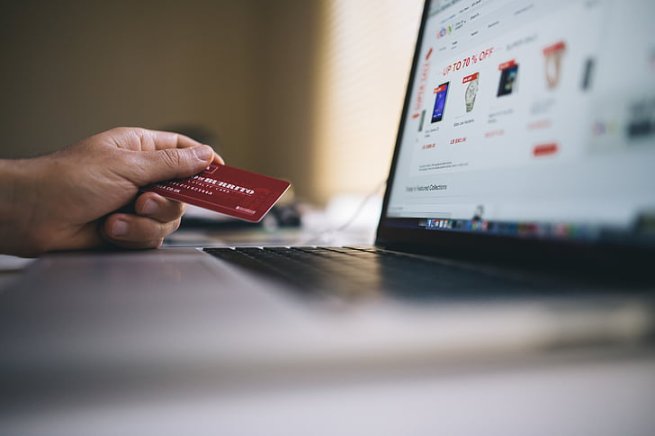The first step to accepting online payments is a merchant account. This business bank account allows your company to receive payment through debit and credit cards.
Once you have your merchant account, you can start accepting online payments by setting up a payment gateway and a payment processor. This is a great way to simplify your e-commerce process and help you increase sales.

Table of Contents
1. Merchant Account
Setting up online payment processing is a great way to make money and boost your business. However, the process can be overwhelming and confusing at first, especially if you are unfamiliar with it.
Before you begin, you need to know what types of payment methods you want to accept and how they will be processed. This will help you determine which merchant account is right for your needs and what type of integrations will be most beneficial.
After you have figured out what you need, it is time to apply for a merchant account. This can be done through a credit card processor or a bank. The application process can take several days or weeks, depending on the merchant service provider and your industry.
During this process, the provider will conduct due diligence on your business and determine whether it is eligible for a merchant account. In some cases, they may require additional information and documentation, including a tax identification number and proof of your business’s physical location.
Once the approval process is complete, your merchant account will be activated. You will receive a set of tools and instructions to help you start accepting payments. This can include connecting to a POS system, integrating your card reader with software, and creating a digital receipt.
When you are ready to accept payments, the next step is to log into your merchant account and input your customer’s payment information. The processor will then contact the card networks to approve the transaction and deposit the funds into your bank account.
In most cases, the money will be in your bank within three working days. This is called the “settlement period.”
Once you’ve completed this step, you will have an account that allows you to accept credit cards and debit cards at your business. You will also be able to process ACH payments through the network, which is a low-cost alternative to credit cards for eCommerce businesses.
Once you have a merchant account, you will be able to accept credit cards and debit cards from your customers at your storefront or online. You can also use your account to receive payments through e-mail and mobile apps.
2. Gateway
A gateway is an important part of any payment processing ecosystem. It ensures that customers’ payment information is safely delivered to the merchant’s website and to the acquiring bank in the case of credit cards.
Depending on your needs, you can choose to create your own payment gateway or work with a third-party provider. Either way, you’ll need to design a functional API that can process as many different payment methods as possible and adapt easily to changing payment trends.
When choosing a payment gateway, pay attention to the fees and conditions of each. This will help you decide if the service is worth your time and money. For example, some gateways have one-time setup fees and monthly fees, while others may charge a small fee per transaction.
Once you’ve picked your payment gateway, it’s time to connect it with a payment processor. This could be a financial institution, a card network, or an independent processor. You’ll need to ask for the processor’s API documentation and follow their implementation instructions.
Your gateway also needs to have a customer relationship management system (CRM) to keep clients’ payments and contact information in one place. CRMs allow you to create a consistent, customer-friendly experience while also reducing costs.
To build a custom gateway, you’ll need to hire a team of experts who specialize in developing financial applications. This team will have experience with creating payment systems and will be able to keep your project on track and avoid any unexpected issues.
As you build your gateway, remember that PCI compliance and data security are essential parts of the process. You’ll need to develop a security program, conduct regular audits, and make sure your gateway meets the standards set by the PCI Data Security Standard.
A network gateway is a device that allows two networks to connect to each other, effectively linking LANs and the public Internet. It regulates traffic by translating and converting protocols between dissimilar networks, making it easier to connect different types of networks and data formats.
3. Payment Processor
Getting your business up and running with online payment processing can be intimidating. There are a lot of things to consider, from the types of payments you take and how they are processed to your overall strategy. It can seem overwhelming, but there are ways to make the process easier for you and your customers.
1. Choose a payment processor that matches your needs.
Payment processors can be found in many different shapes and sizes, but they all perform the same function: allowing merchants to accept credit card payments online or through contactless point-of-sale (POS) systems. They may be owned by a financial institution or a card network, or they might be independent entities.
2. Select a payment processor that can handle a variety of types of transactions.
There are a few main types of payment processors, each with its own unique set of fees and features. These include all-in-one solutions, simplified credit card processors, and payment gateway and merchant account hybrids.
3. Find a processor that offers live customer support.
It’s easy to fall in love with a low-rate processor, but it’s important to ask questions and be sure that they can help you when you need them most. You don’t want to end up with a processor that won’t give you support when your site is down or if a shopper accidentally pays for something that’s not theirs.
4. Determine your payment needs:
There are three main payment methods that your customers can use to pay for goods and services on your site: credit cards, debit cards, and e-wallets. To be successful with these types of payments, you must ensure that your website is secure and has a good user experience.
5. Get started with a payment processor that can handle a wide range of transactions and technologies.
Having a flexible payment system is essential for ensuring that your business can scale quickly. It also helps you maintain a competitive edge by offering new payment options to your customers. Having a well-designed payment platform can also help you stay compliant with credit card companies, prevent chargebacks and keep your customers’ personal information safe.
4. Payment Form
Online payments are becoming more and more popular among customers. They are convenient, safe, and can save you time in many ways. They are also an effective way to collect important customer information at the time of payment, such as email addresses and telephone numbers.
If you want to accept online payments, you will need to set up a payment form with a payment processor. These forms are more limited than a full-scale shopping cart, but they provide a great solution for one-time or recurring payments.
First, you need to get a payment processor account and set up the payment fields on your form with their API documentation. You can then enable payment methods and create different templates to match your payment form.
You can then configure how the form is displayed to your users, what results are shown, and whether or not they will be redirected to a specific URL. These are all settings in the Form Settings section of your Payment Processors.
Next, you can choose whether or not your form requires a PIN. The PIN is an optional alphanumeric string that you can add to your form to ensure your customer’s data is secure.
For example, you may use the PIN to restrict the type of items that can be purchased or to limit the amount of money they can spend. Alternatively, you can also use the PIN to ensure that only people who know what they’re doing can fill out your form.
In addition, you can allow a user to select their payment method and choose a recurring payment plan. If a user selects this option, their credit card details will be saved in your database for future payments.
You can then use this form to send emails or messages to your customers after they have made a purchase. These can be sent directly to their inbox or can be saved to your email server for later use. You can also set up custom messages, which you can send to specific users based on their preferences or demographics.




